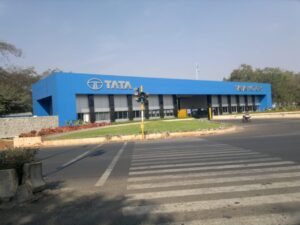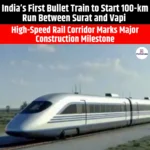Tata Motors Demerges CV and PV Units
|
General Studies Paper II: Industrial Revolution, Industrial Growth |
Why in News?
Recently, Tata Motors has officially demerged its Commercial Vehicle (CV) and Passenger Vehicle (PV) units. The demerger decision aims to give each business more focus and operational flexibility, strengthening its market position in a rapidly evolving automotive landscape.
Background of Tata Motors Demerger
- On October 1, 2025, Tata Motors demerged its Commercial Vehicle (CV) and Passenger Vehicle (PV) businesses into two distinct listed entities.
- This decision had been first approved by the company’s board in March 2024, after a detailed evaluation of its long-term strategy.
- The split creates Tata Motors Commercial Vehicles Limited (TMLCV) for the CV business, while the PV division continues under Tata Motors, housing both the passenger vehicle and the electric vehicle (EV) arms along with Jaguar Land Rover (JLR).
- For years, the two segments had operated under one umbrella, but their market dynamics, consumer base, and capital requirements were significantly different.
- Since 2021, both CV and PV divisions had already been functioning with independent CEOs, preparing the ground for a full legal separation.
- The demerger is now seen as the final step in the company’s effort to simplify its structure and unlock value.
Why Tata Motors Chose to Demerge?
- Different Market Cycles: Tata Motors realized that Commercial Vehicles (CVs) and Passenger Vehicles (PVs) operate in very different economic cycles. CV sales depend on government spending in infrastructure, mining, and freight movement. These markets often rise during periods of industrial growth but slow down when economic activity drops. In contrast, PV demand comes from households, lifestyle shifts, and urban mobility needs. Since both cycles rarely move in the same direction, managing them together created challenges.
-
- Investment Requirements: The financial needs of both segments are very different. CV businesses require funding for plants, fleet upgrades, and dealer networks. On the other hand, PV and EV divisions need multi-billion-dollar capital to develop battery technology, digital platforms, and vehicle software. In FY25, Tata Motors’ PV segment directed significant investments toward electric mobility and new product launches, while CV focused on expanding heavy-duty truck lines. This mismatch often created difficulties.
- Limited Synergies: When Tata Motors studied its operations, it found that CV and PV units had limited synergies. CVs run on fleet economics and serve industries, while PVs cater to consumer aspirations and comfort. Since CVs could not align with long-term technology shifts, it made sense to keep them separate. The demerger allows PV, EV, and JLR to collaborate on innovation and technology ecosystems.
Impact of Tata Motors Demerger
- Electric Mobility: The Passenger Vehicle (PV) division now has the freedom to fully focus on electric mobility and consumer-driven innovations. By FY25, Tata Motors had already sold more than 200,000 EV units, making it the number one EV player in India. In the same year, PV revenues touched ₹48,445 crore, with EVs contributing around ₹8,187 crore. The PV business can dedicate resources to battery research, charging infrastructure, and connected car software.
- Leadership in Vehicle Market: The Commercial Vehicle (CV) arm continues as the undisputed leader in India’s heavy and light vehicle markets. In FY25, it generated revenues of ₹75,055 crore and launched more than 139 new models. As an independent company, CV operations can now invest in green transportation solutions, including cleaner fuels, electric buses, and advanced logistics technologies.
- Greater Agility: For investors, the split brings clarity in valuations. based on its own growth drivers and financial performance. The share entitlement ratio of 1:1 customers also benefits, as each division can now prioritize innovation, service quality, and product launches without balancing the needs of the other. This sharper focus is expected to enhance brand loyalty and improve customer satisfaction in both CV and PV markets.
- National Growth Goals: The demerger also supports India’s long-term goals of sustainable growth and industrial expansion. The PV arm can contribute to the government’s vision of 500 GW renewable energy capacity by 2030, by offering a strong portfolio of eco-friendly vehicles and EV infrastructure partnerships. This alignment creates wider economic impact.
|
Tata Motors
|
|
Also Read: VinFast Enters India’s EV Market |









